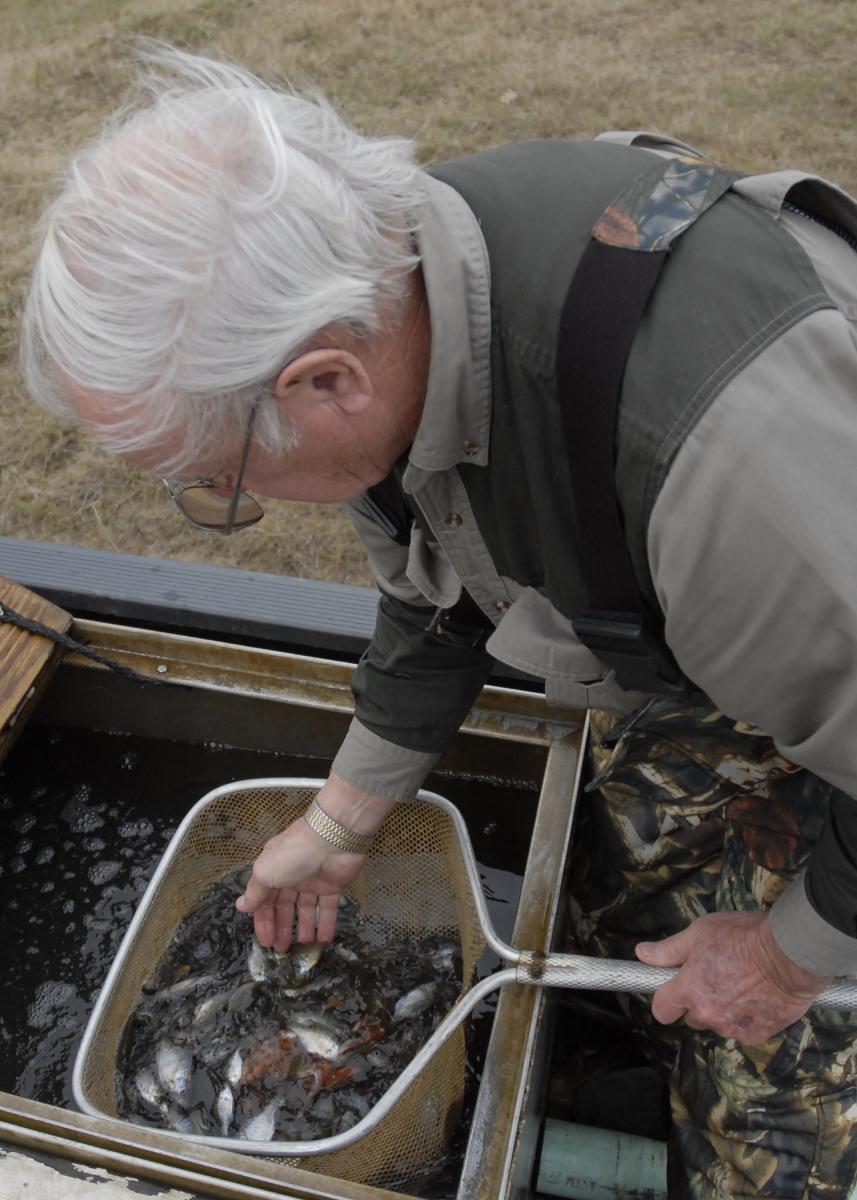Information Possibly Outdated
The information presented on this page was originally released on November 18, 2016. It may not be outdated, but please search our site for more current information. If you plan to quote or reference this information in a publication, please check with the Extension specialist or author before proceeding.
Consider the gene pool when growing big fish
STARKVILLE, Miss. -- The best fishing holes may begin with good fish genetics, but they continue with proper pond management.
Since the early days of farm pond management, MSU Extension Service specialists have made fish stocking recommendations based on the idea that if it's set up right in the beginning, the pond will provide quality fishing opportunities for decades to come. I have told many landowners there's no need to restock bass or bream unless there is a fish kill or someone wants to intentionally start over by draining or poisoning the pond.
However, I have been haunted recently by nightmares of my college days and my Genetics 101 classes. Specifically, I remembered discussions of inbreeding depression, which happens when closely related animals reproduce with one another.
Genetic variation is important to fish growth and maximum size, and inbreeding depression reduces genetic variation. A small genetic population can lose genetic material through successive generations. This reduction in genetic variation can lead to increased numbers of deformed fish, lower egg production, lower survival and slower growth.
 Adding a few new fish to refresh genetics in a lake can be a good idea, but only restock with the same strains already in the pond. This net includes hybrid bass that will join other hybrids in a pre-existing pond in Oktibbeha County, Mississippi. (File photo by MSU Extension Service/Linda Breazeale)
Adding a few new fish to refresh genetics in a lake can be a good idea, but only restock with the same strains already in the pond. This net includes hybrid bass that will join other hybrids in a pre-existing pond in Oktibbeha County, Mississippi. (File photo by MSU Extension Service/Linda Breazeale)For example, a 20-acre pond may be stocked with 2,000 bass purchased from a single hatchery. In a typical hatchery, bass are produced from a small group of adult fish. Many of these broodfish likely were collected from a single lake or purchased from another hatchery, so they may be closely related.
Each female bass produces at least 2,000 eggs per spawn, so it’s likely that the 2,000 bass stocked in the lake came from only a few closely related parents -- maybe even the same two parents. In genetics, this is called a small founder population. When these 2,000 fish are released into the lake, they will interbreed for decades. If they are too closely related, bad things can happen.
There are ways to avoid this problem. First, if possible, stock your lake in the beginning with fish from several different hatcheries. This diversity starts the lake off with more genetic variation, which should reduce the potential for inbreeding. Don’t stock a mixture of genetic strains -- like a mix of Florida bass and northern Largemouth Bass or F1 hybrid bass -- as too much diversity can lead to another problem called outbreeding depression. Pick a strain and stick with it.
Second, from time to time, it might not be such a bad idea to add a few new fish to refresh genetics to your lake. It doesn’t take very many fish to counteract inbreeding, as long as they come from a slightly different source with slightly different genetics. Again, avoid mixing genetic strains to prevent outbreeding depression. As a rule of thumb, locally adapted fish are generally the best choice.
Considering genetics before and after stocking may help keep the pond thriving, but keep in mind that proper harvest and prey management are still the keys to growing big bass. Manage water quality, properly harvest bass, and you will be rewarded with tight lines for years to come.
For more information on liming ponds, contact the local Extension Service office.

Editor’s Note: Extension Outdoors is a column authored by several different experts in the Mississippi State University Extension Service.



